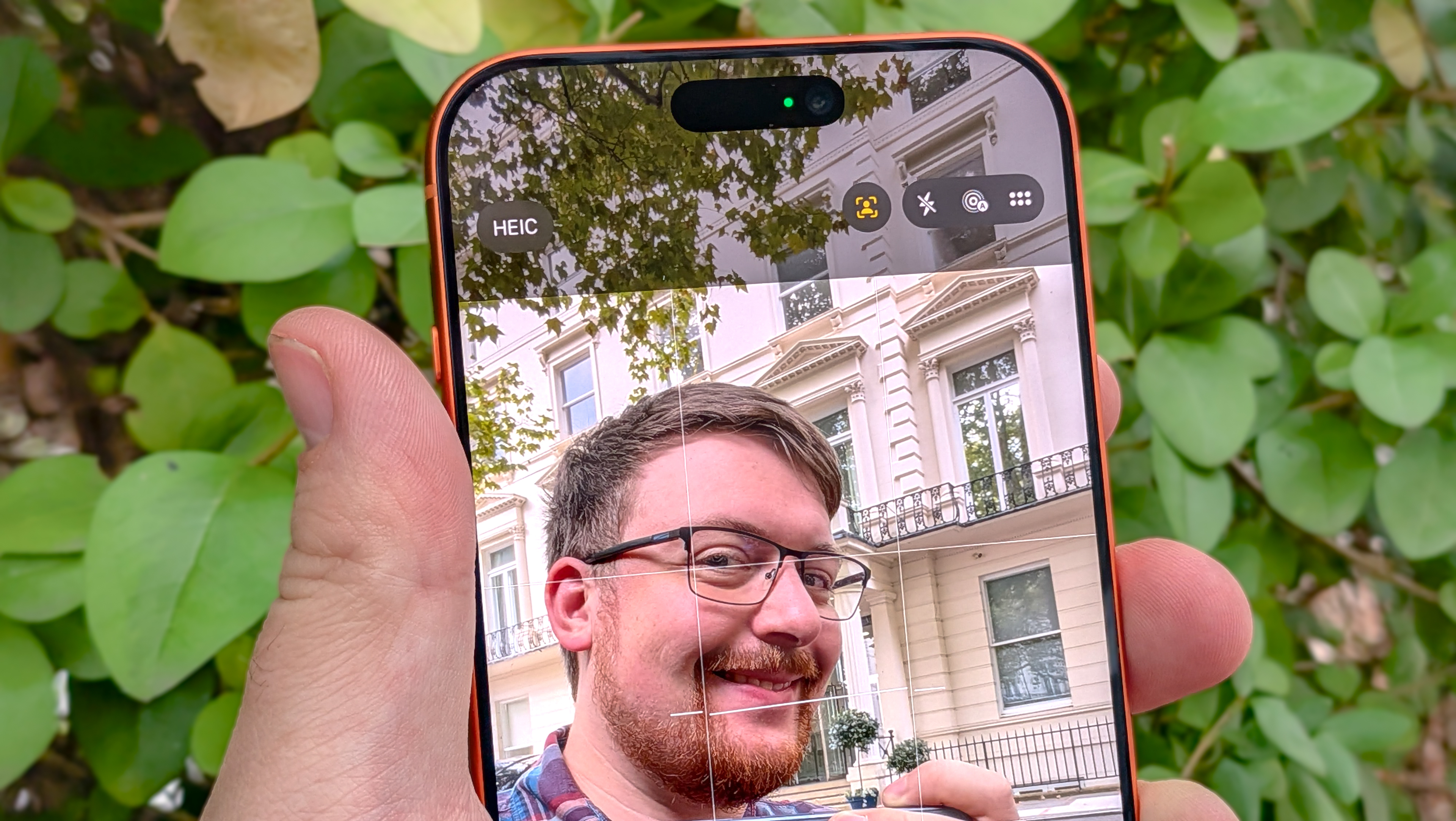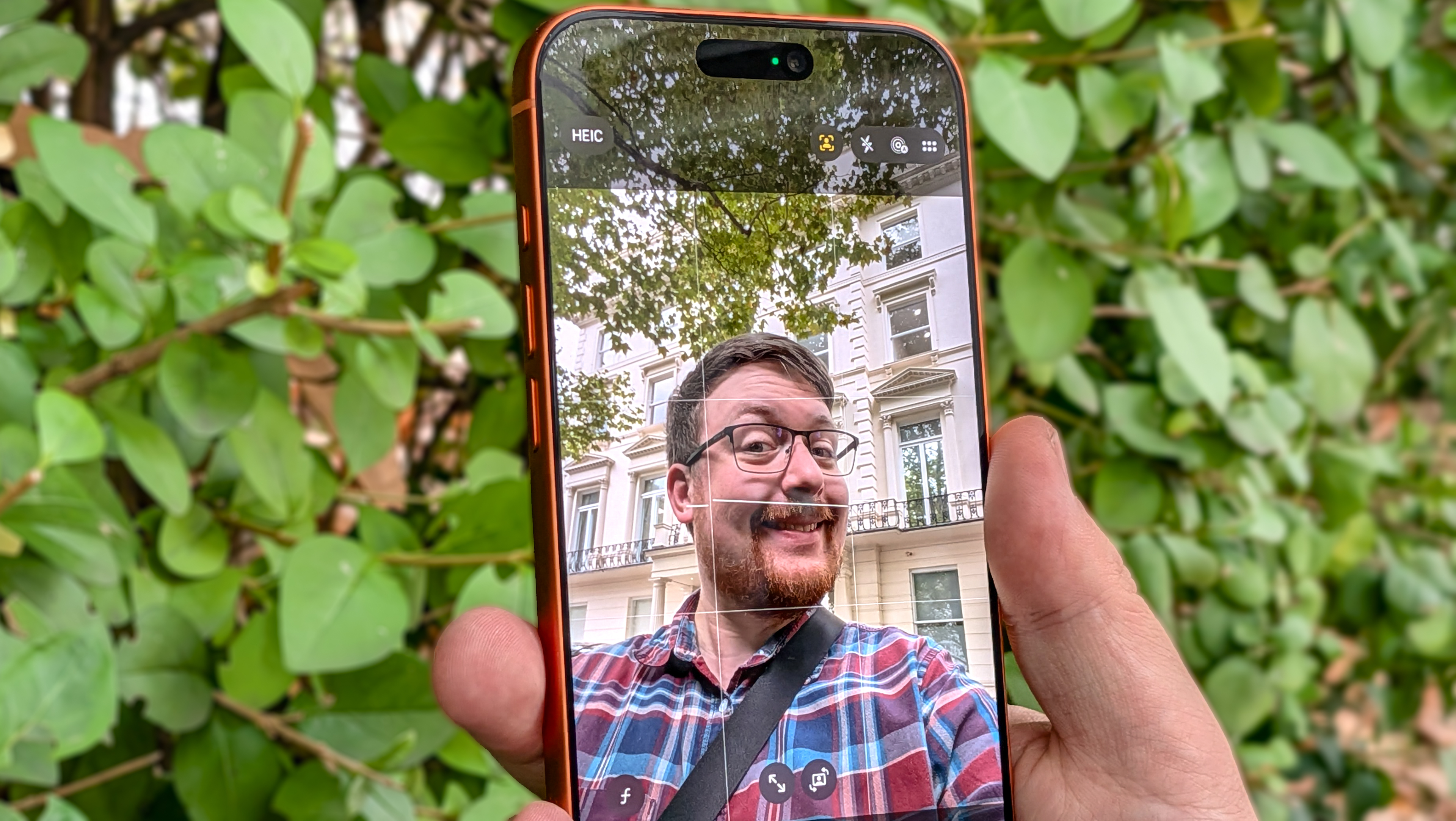iPhone 17 Center Stage camera — here’s the differences it makes from previous iPhones
The latest iPhones all have some major selfie camera upgrades

The iPhone 17 line-up is Apple's most diverse yet, but all the models have one thing in common. Whether Pro, Air or just regular old 17, all the new iPhones share a front camera upgrade — a larger square sensor, with a higher resolution and Center Stage tracking support.
But having tested an iPhone Air and iPhone 17 Pro Max, I've found myself questioning how substantial an upgrade this new camera is. You can do things with the upgraded selfie snapper that you couldn't before, but I can't say I'm convinced of their utility.
When you're uncertain of something, the best way to find a more definitive answer is testing - something we're rather good at here at TG. So here's my look at the iPhone 17's Center Stage camera vs the iPhone 16, and what it means for your selfies and FaceTime calls.
What's been upgraded?
Comparing the new Center Stage camera against the old "TrueDepth" camera that you'll find on the iPhone 16 series and earlier, you'll see that Apple upped the resolution from 12MP to 18MP, widened the lens from a 23mm equivalent to a 20mm one (lower is wider when it comes to lenses), while also adding tracking abilities and orientation shifting. About the only thing that has remained the same is the aperture, the size of the opening in the camera that determines how much light hits the sensor.

iPhone 17 Pro Max horizontal selfie

iPhone 16 Pro Max horizontal selfie
But how does it work in practice? Well, as we can see in these sample shots, there's no resolution difference, and only a marginal difference in color and HDR.


Portrait mode doesn't differ either, although it's annoying that the newer iPhone didn't quite cut around my glasses as neatly as the older model. The real difference, as we’ll now see, is in the framing.

iPhone 17 Pro Max wide horizontal selfie, taken vertically

iPhone 16 Pro Max vertical selfie
By default, the camera will orient itself in the way you'd logically expect - portrait with the phone upright, and horizontal with the phone on its side. But you can change this at any time with a button that pops up next to the zoom level icon. The difference is easy to see, despite the fact that the two shots above were taken without moving the phone.
Get instant access to breaking news, the hottest reviews, great deals and helpful tips.
Speaking of which, you can use the zoom button to pick a magnification level for yourself. But if you’re in default zoom and enough people enter the shot, the iPhone automatically zooms out for your convenience.

iPhone 17 Pro Max wide vertical selfie, taken horizontally

iPhone 16 Pro Max vertical selfie wide
At default zoom on both phones, you fit the same amount of stuff in shot. But at maximum width, you can tell there's a lot more space for your subject or subjects in the iPhone 17 Pro Max image than in the iPhone 16 Pro Max.
Zooming out disables Center Stage, as the phone relies on the image margin created by the extra sensor to keep you in frame. But that’s a reasonable sacrifice to make.
So, if you've got a lot of people to fit in your shot, or as much of a landscape as possible alongside you, the greater framing flexibility can be handy. But if you're using the standard width and are only taking a photo of yourself, the benefit is limited.
All the world's a (Center) Stage
The iPhone 17 is the first phone to have Apple's Center Stage feature )excluding the ability to use it via Continuity Camera on Mac). This makes the iPhone capable of dynamically zooming the camera in and out, helping fit in more people or focus on a single person as required during a photo or call.
It's a clever use of a camera's available pixels, but I am not sure of its utility on an iPhone. It's much easier to move a smartphone to reframe whoever's in shot than it is for an iPad or MacBook, after all.


Another advantage of Center Stage is that it offers image-stabilized video, which can be handy if you're filming a clip for your latest TikTok.
In these GIFs, made from screen-captured footage of our two test iPhones during a FaceTime call, you can tell the difference in footage where I’m moving around, either just the natural wobble caused by walking with the phone in my hand or as I turn around. The iPhone 17's video is much more stable than the iPhone 16's.
iPhone 17 selfie camera: How big a difference does it make?
iPhones have taken strong selfies for a long time, and the iPhone 17 keeps that trend going. Despite the higher megapixel count, it's the stuff around the edges of taking simple, attractive photos that's really changed with the selfie camera.

I like the freedom of switching between portrait and landscape selfies whichever way you're holding an iPhone 17. And having a wider field of view is likely something I appreciate having in the future when I have an epic-enough background or large enough friend group to use it.
The Center Stage ability itself is something I don't think I'll gain much from in my own usage. But it's a unique feature that Apple can hold over its rivals, and one that definitely impacts image stability when taking video.
The new front camera of the iPhone 17 series isn't enough to justify an upgrade by itself. But it's certainly the best that selfies I've ever seen from Apple's phones.
Follow Tom's Guide on Google News and add us as a preferred source to get our up-to-date news, analysis, and reviews in your feeds. Make sure to click the Follow button!
More from Tom's Guide
- I just ran a marathon with the Apple Watch Ultra 3 vs. Garmin Fenix 8 Pro — here’s the winner
- I put the iPhone 17 Pro vs Google Pixel 10 Pro through a 7-round face-off — here’s the winner
- I just switched from iPhone 16 Pro Max to iPhone Air — what I like and what I don't

Richard is based in London, covering news, reviews and how-tos for phones, tablets, gaming, and whatever else people need advice on. Following on from his MA in Magazine Journalism at the University of Sheffield, he's also written for WIRED U.K., The Register and Creative Bloq. When not at work, he's likely thinking about how to brew the perfect cup of specialty coffee.
You must confirm your public display name before commenting
Please logout and then login again, you will then be prompted to enter your display name.
